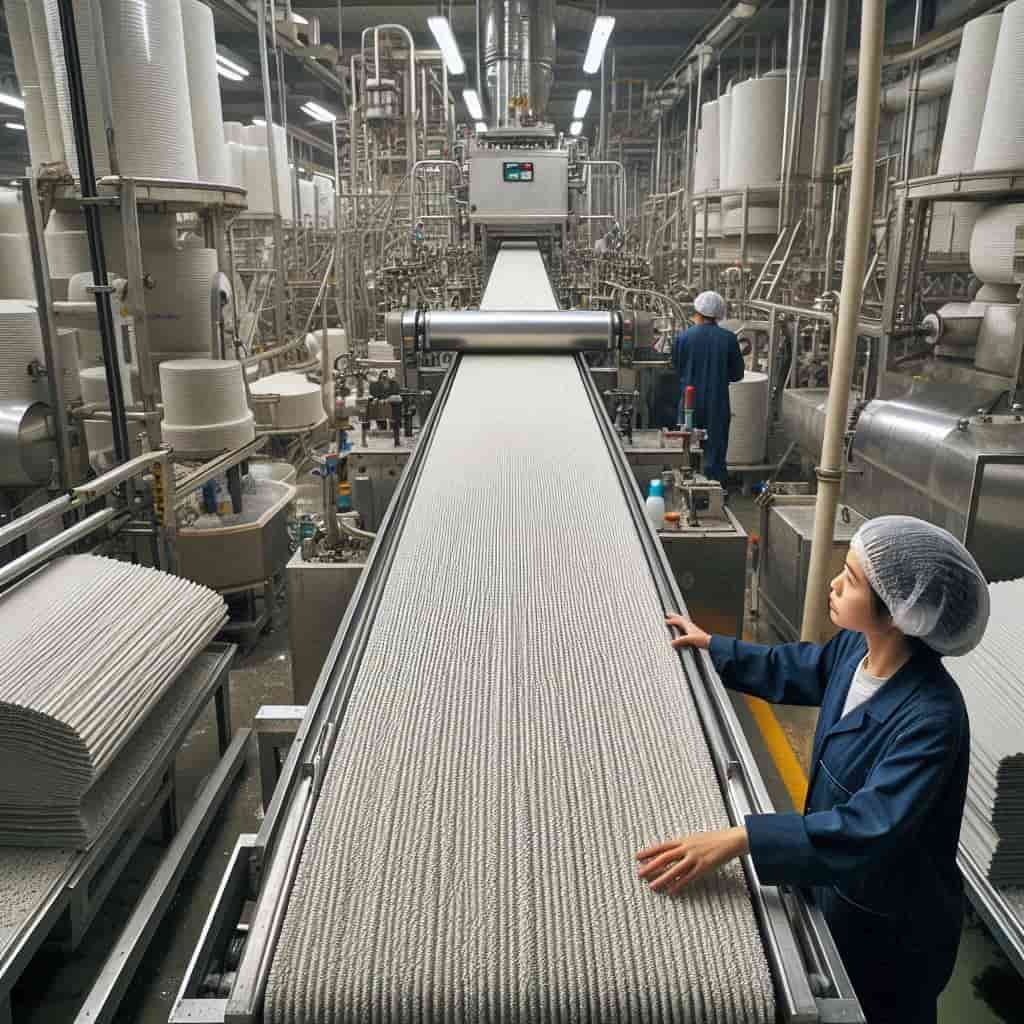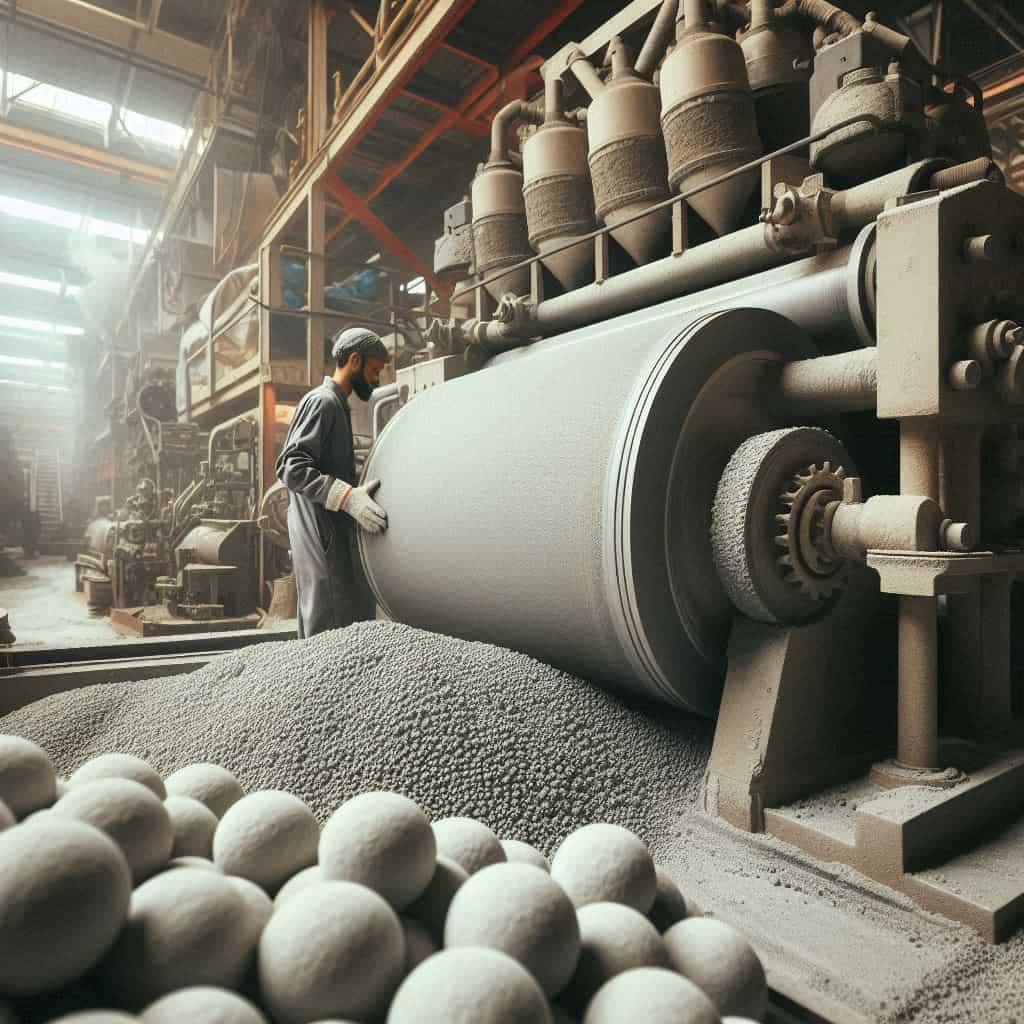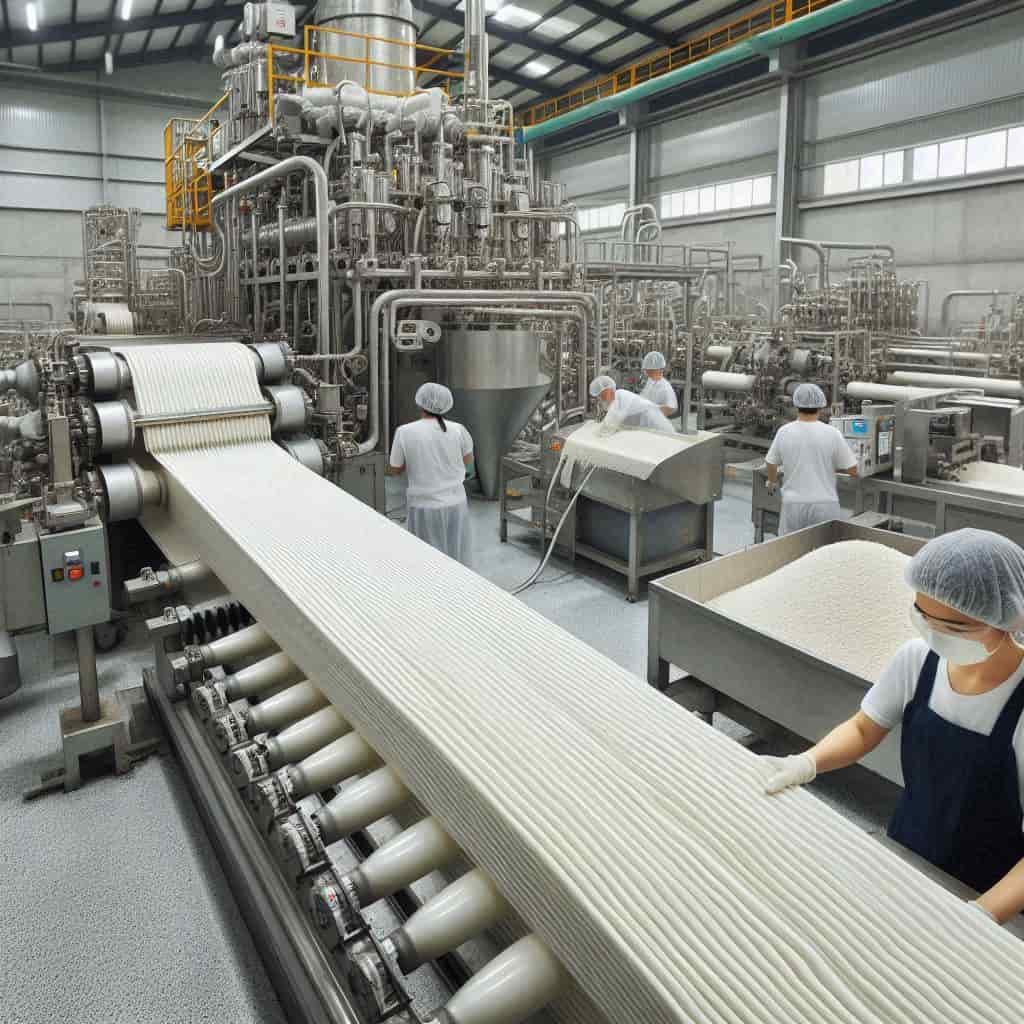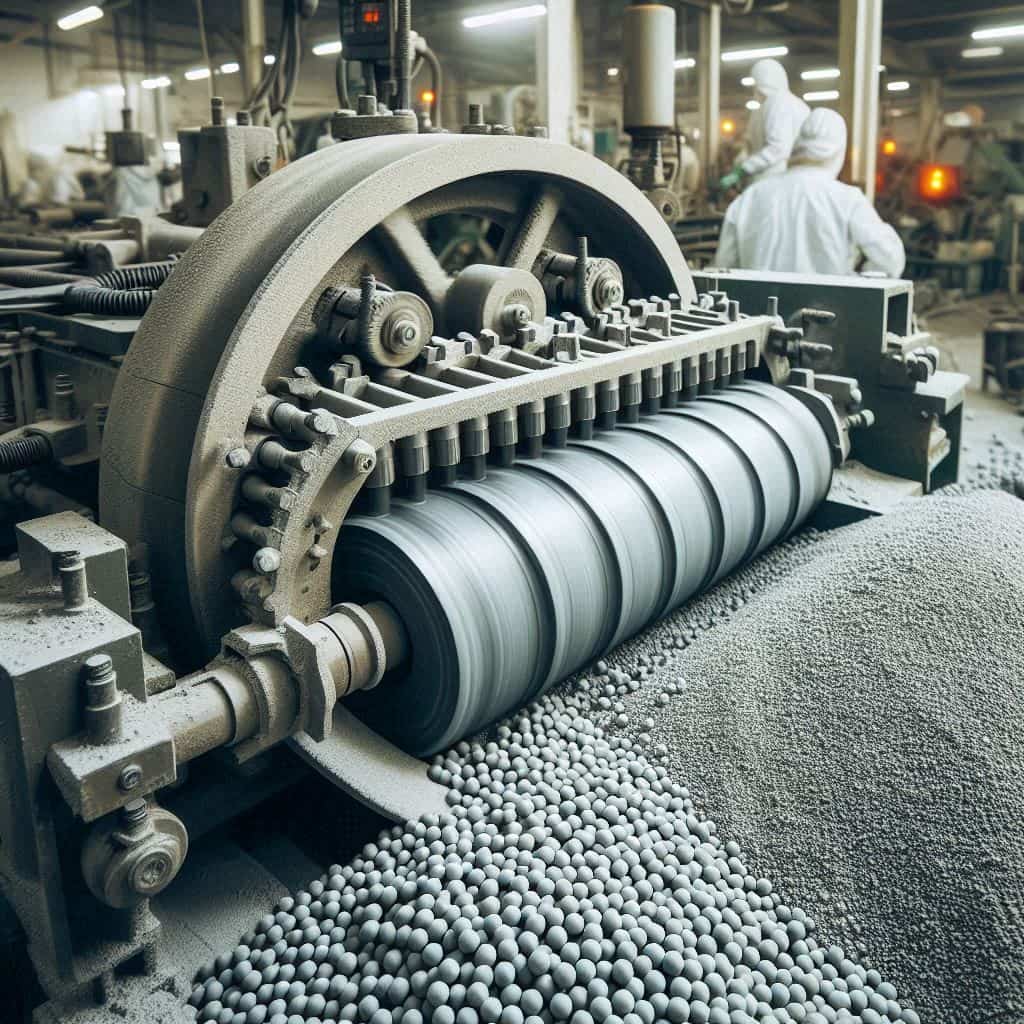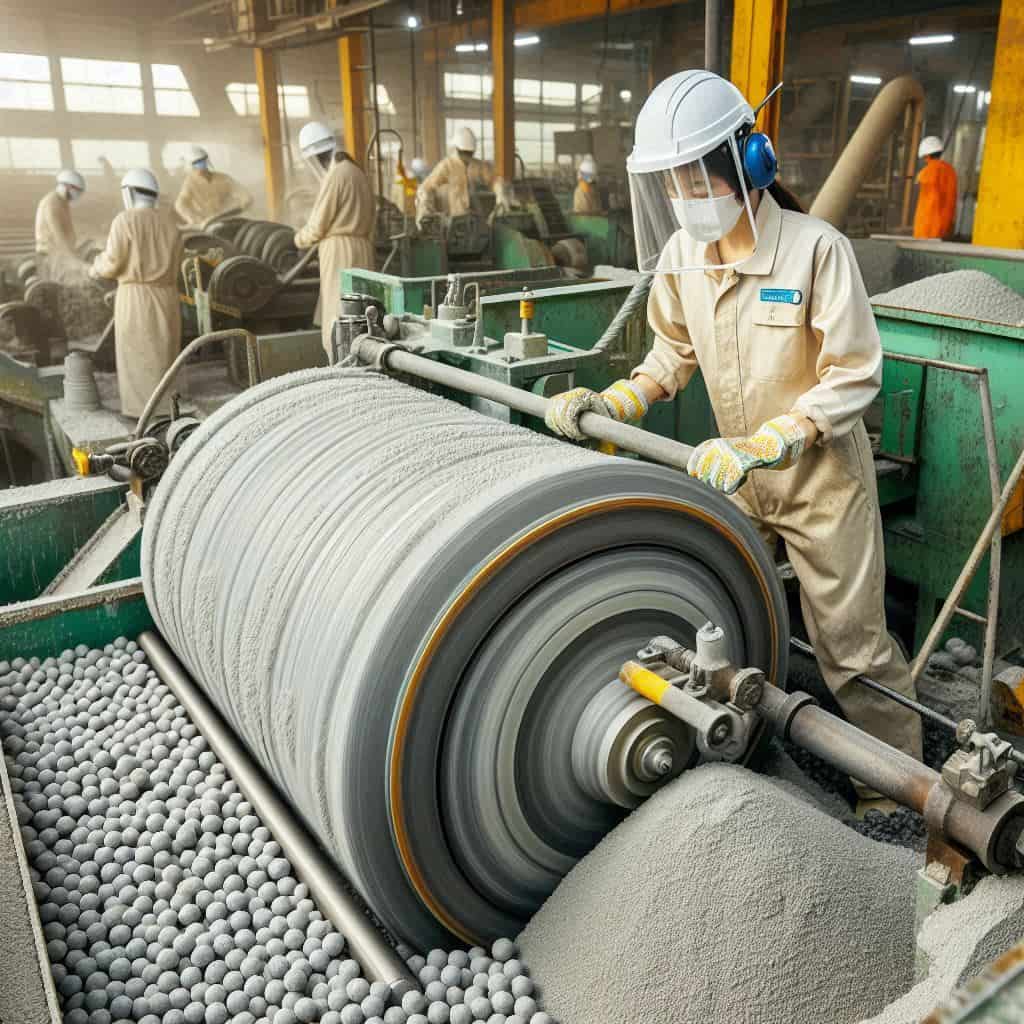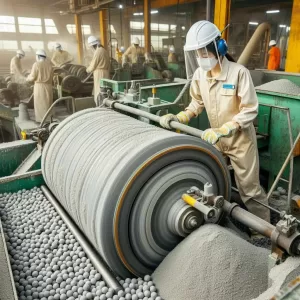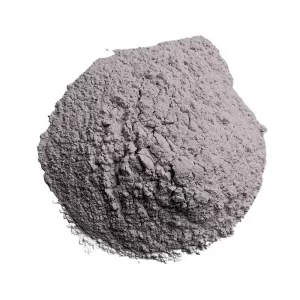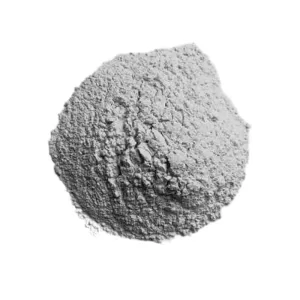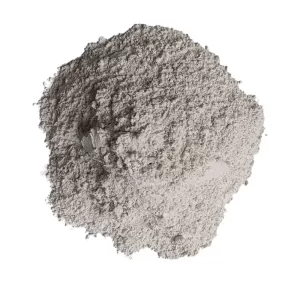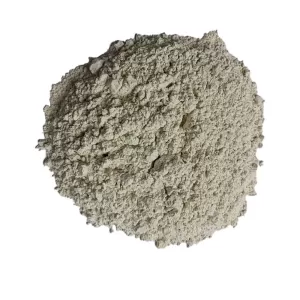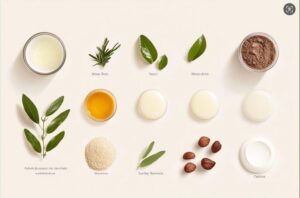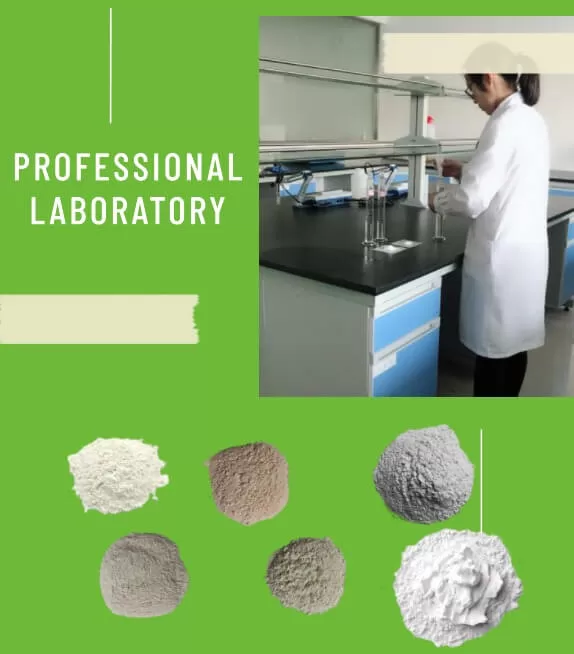The Role and Changes of Bentonite in Clay Bonding Sand
The bentonite used in casting mainly includes sodium bentonite and calcium sodium bentonite. Sodium bentonite is processed from natural sodium bentonite or artificial sodium bentonite. It is popular in the casting industry for its good reusability and high wet compressive strength. Because of its good plasticity, it can prevent sand inclusion, scarring, block falling, sand mold collapse, and other phenomena in castings. In addition, it has strong formability and high cavity strength, which is convenient for the metal industry to cast wet or dry molds. It is the preferred sand binder for precision castings. Calcium sodium bentonite is processed from natural calcium sodium bentonite and is a sand binder commonly used for light castings. It is popular with users for its practicality and convenient sand cleaning of castings.
Compared with other binders, bentonite has an important feature, that is, it has a certain heat resistance. As long as the heating temperature is not too high, the bentonite that has been freed of free water can still restore its bonding ability as long as water is added. The bonding ability of bentonite can only be manifested after adding water. The loss of bentonite’s bonding ability is also related to its dehydration. So far, it is believed that there are three forms of water in bentonite: one is free water, that is, water adsorbed by bentonite particles. When heated to above 100°C, free water can be removed. The bonding ability of bentonite without free water is not affected; the second is firmly bound water. When heated at 110°C for a long time, bentonite can completely remove free water, but will not remove firmly bound water. Bentonite that has completely removed free water will continue to lose weight when heated at a higher temperature (such as 200°C, 300°C), indicating that there is still water loss. After bentonite is heated and dehydrated in this way, as long as water is added, its bonding ability can be fully restored; the third type of water is lattice water, also known as structural water. Lattice water can only be partially or completely removed at a fairly high temperature. After the lattice water of bentonite is removed, it loses its bonding ability and becomes dead clay.
Different bentonites lose their bonding ability at different temperatures. The differential thermal analysis experiment proves that: Generally speaking, the failure temperature of natural sodium bentonite is 638℃, and that of calcium bentonite is 316℃. The failure temperature of artificially activated sodium bentonite varies due to different activation conditions, but they are all lower than that of natural sodium bentonite. It can be seen that there are two types of bentonite in clay-bonded sand, one is effective bentonite and the other is dead clay. The more dead clay there is, the worse the performance of clay-bonded sand.
When sodium bentonite is heated below 600℃, its bonding ability is basically unaffected. When the heating temperature exceeds 600℃, it loses its bonding ability sharply. When heated to above 700℃, it almost completely loses its bonding ability. Calcium bentonite begins to slowly lose its bonding ability above 100℃. The higher the heating temperature, the more obvious the loss of bonding ability. When artificially activated sodium bentonite is not well used, its failure temperature is only slightly lower than that of natural sodium bentonite. After repeated heating several times, it is close to that of calcium bentonite.
After the molten metal is poured into the mold, if the molding sand close to the surface of the casting is heated to above 800℃ (some non-ferrous alloys cannot reach this temperature). No matter what kind of bentonite you use, the bentonite in this part of the molding sand will become dead clay. Some of these dead clays are attached to the surface of the casting along with the molding sand and are taken away by the casting, and some remain in the recycled old sand. Except for the производитель бентонита of large castings, most of the molding sand cannot reach such a temperature during the casting process. However, since different foundries use bentonites produced by different manufacturers, the temperature for removing lattice water is different, and the rate of removing lattice water is also different. If bentonite that is easy to remove lattice water is used, even in the molding sand that is not directly close to the casting, more bentonite will fail and become dead clay. If clay that is not easy to remove lattice water is used, less dead clay will be produced. In short, the less bentonite added, the better. The higher the effective bentonite content in the clay bonding sand, the more bentonite will fail due to heat.
Control of Old Sand
After molding and casting with clay wet sand, most of the sand can be recycled, except for the active bentonite in some sands close to the castings that becomes dead clay due to heat failure. When preparing clay wet sand, the amount of old sand is generally more than 90%. If the old sand is not properly handled, no matter how the sand is mixed or what auxiliary materials are added, good sand cannot be obtained. Therefore, effective treatment of old sand is the prerequisite for ensuring the quality of sand.
In order to ensure the stability of the performance of the sand, the temperature of the old sand should be kept below 50℃. If it exceeds 50℃, it is considered hot sand. The hot sand problem has been recognized as the biggest problem that clay wet sand casting must face. If the temperature of the sand is too high, the casting is prone to defects such as sand inclusion, rough surface, sand erosion, and pores. At present, there are many types and specifications of sand cooling devices, mainly cooling drums, double-disc coolers, and cooling fluidized beds, all of which use water evaporation to cool the sand. Among them, the cooling fluidized bed has a better effect.
It is very important to strictly control the moisture content of the old sand. If the moisture content of the old sand entering the sand mixer is too low, the impact on the quality of the sand mixing may be no less than that of the sand temperature being too high. After the casting mold is poured, due to the influence of hot metal, many soil-water bonding films on the surface of the sand particles are dehydrated and dried. It is not easy to add water to make it absorb water and restore plasticity. The lower the moisture content of the old sand, the longer it takes to add water and mix it in the sand mixer to achieve the required performance. Since the time for sand mixing in production is limited, the lower the moisture content of the old sand, the worse the overall quality of the mixed sand. The moisture content of the old sand entering the sand mixer can only be slightly lower than that of the mixed sand. In this way, there is still a considerable period of time from the cooling of the sand to the entry into the sand mixer, and the water can fully wet the bentonite on the surface of the old sand particles.
For cast iron parts made of clay wet sand, the particle size of the molding sand is better to be finer. Since the amount of old sand used in sand mixing is generally more than 90%, the factor that determines the particle size of the molding sand is mainly the old sand. The amount of new sand added is very small, and it is impossible to change the particle size of the molding sand by adding new sand. Therefore, the particle size of the old sand should be tested frequently: the sand particles on the 140 mesh sieve should be between 10% and 15%, and the sum of the fine sand on the 200 mesh sieve, 270 mesh sieve, and the bottom plate should be as small as possible, and the sum of the fine sand should generally be less than 4%. The content of water-absorbing fine powder is best controlled between 2% and 5%. If the content of water-absorbing fine powder is too high, the moisture content of the molding sand will be high, which is easy to cause pinholes, surface roughness, and sand holes on the castings; if the content of water-absorbing fine powder is too low, the performance of the molding sand (especially compactability) will not be stable. The water-absorbing fine powder is mainly dead clay, and also includes coked coal powder fine particles and other fine powders.
The Amount of Additional Bentonite
When mixing sand, a certain amount of bentonite must be added to keep the necessary amount of bentonite in the molding sand. The bentonite content is usually determined by the methylene blue method. The amount of bentonite measured by the methylene blue method is called the amount of effective bentonite.
New Sand Addition
The new sand should not be added too much, and the total amount of sand in the system should be kept stable as a principle. Too much new sand will have a negative impact on the quality of the molding sand. In my country, foundries generally have a lot of scattered sand, and many factories add 5% to 8% of new sand. Of course, the amount of new sand addition also needs to consider many factors, such as equipment conditions and the amount of core sand entering.
Coal Powder Addition
The amount of coal powder added must be determined based on
the measured value of effective coal powder in the old sand. The coal powder content in clay wet sand should be roughly controlled between 3.5% and 5.5%. Of course, the amount of coal powder added must be determined based on the characteristics of the casting and the quality of the coal powder.
Sand Mixing
The main function of sand mixing is to mix the components in the clay bonding sand evenly, so that the water can fully wet the bentonite, and the effective bentonite paste can be applied on the surface of the sand particles. The goal is to make the clay bonding sand have the performance to adapt to the molding equipment. Since the bentonite paste is a semi-solid viscous material, the energy required to achieve the above goal is very large. If the power of the sand mixing equipment is not high, or the sand mixing time is not enough, the bentonite cannot fully exert its bonding effect, the strength of the molding sand is not high, and other properties are not good. If the water content in the molding sand is increased, the water content of the bentonite paste is increased and the viscosity is reduced, the energy required for applying the bentonite paste can be reduced, that is, the sand mixing time can be shortened. However, due to the decrease in the viscosity of the bentonite paste, the wet compressive strength of the molding sand also drops sharply, so this method is actually not advisable.
In order to reduce the energy required for sand mixing, it is important to adopt a reasonable order of adding materials. When mixing old sand, do not follow the habit of adding dry materials (sand and bentonite) first, dry mix for a period of time, and then add water to mix. Sand and water should be added first and then bentonite, because the water has been dispersed and there are no large water droplets. After adding bentonite, only a large number of small clay balls can be formed. It is relatively easy to press these small clay balls open, and the energy required is also small. In other words, using the same sand mixing equipment to obtain the same quality of molding sand, the required mixing and grinding time is shorter. Some foundries abroad, under the condition of using intermittent sand mixers, add water to the sand mixer before mixing the sand and run it for a few seconds (of course, the equipment ensures that the water does not leak). In this way, not only the above-mentioned benefits of adding water first can be achieved, but also the grinding wheel and scraper can be cleaned before each sand mixing, which improves the efficiency of sand mixing.
Wet Compressive Strength
The control target of wet compressive strength must be selected according to the molding method, and it is not just about high strength. The higher the strength of the molding sand, the greater the energy required for pounding during molding. At present, the strength of the molding sand in many foundries is too high. Some molding sands used for manual molding or vibration molding have a wet compressive strength of up to 130-170kPa. It is difficult to pound the mold tightly with such molding sand. As a result, the surface quality of the casting is poor and shrinkage defects are prone to occur.


